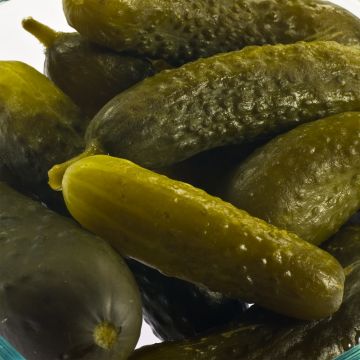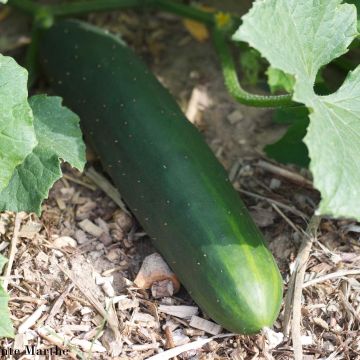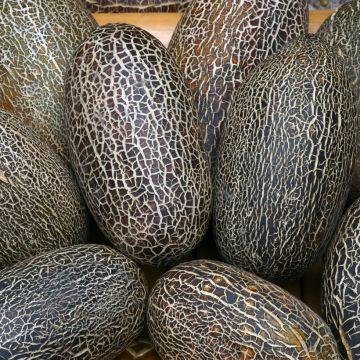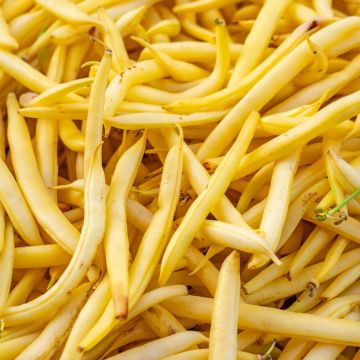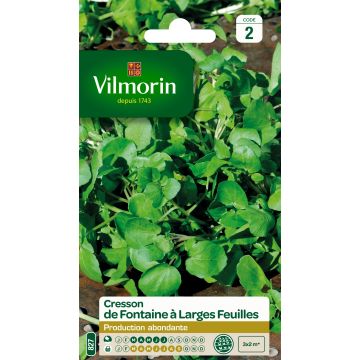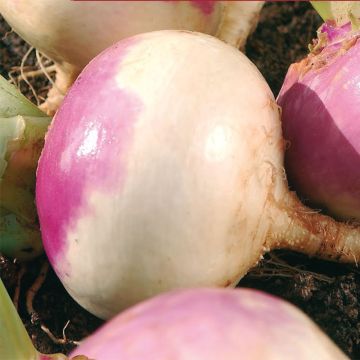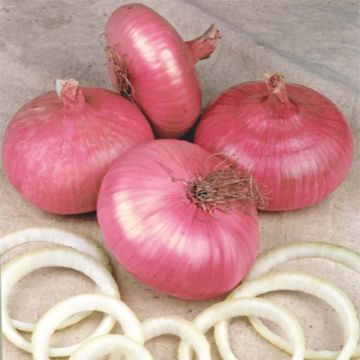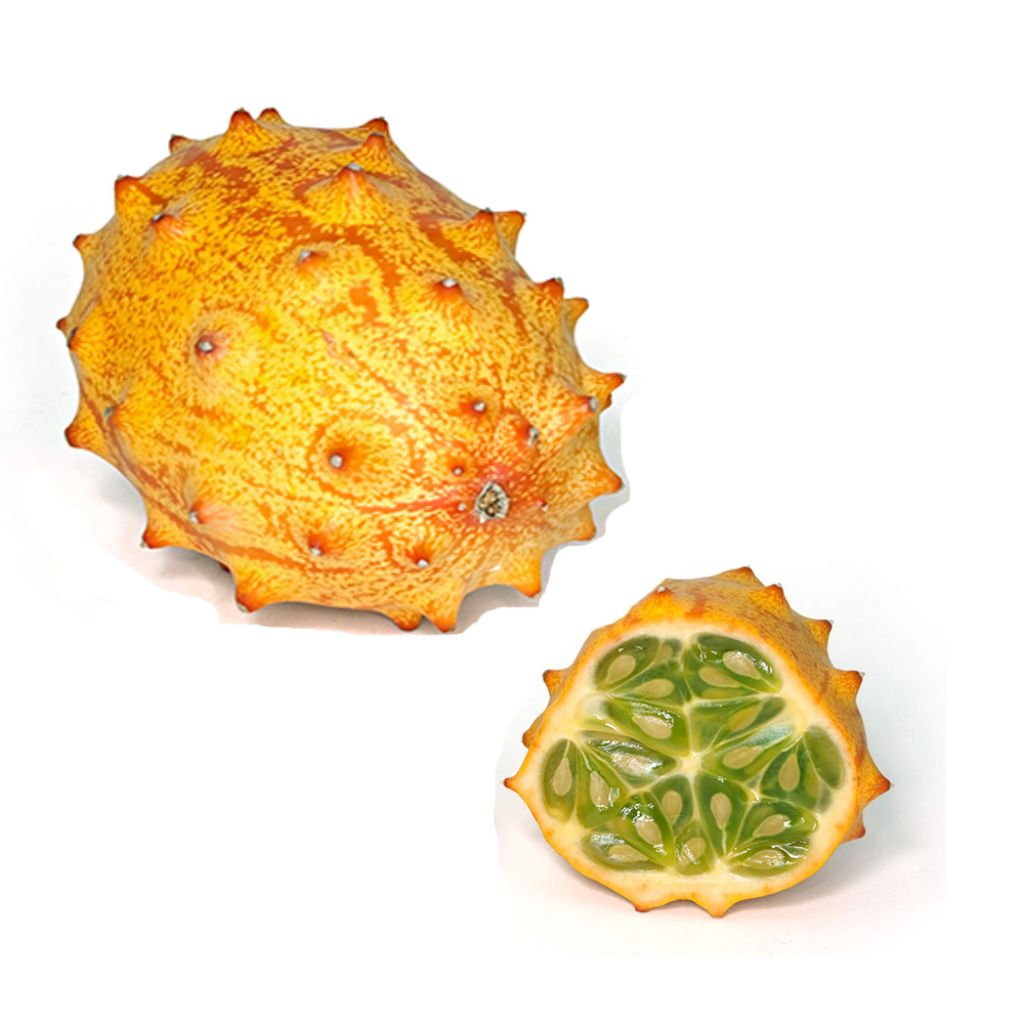

Concombre du Kenya - Métulon
Horned Melon - Cucumis metuliferus
Cucumis metuliferus
Horned Melon, Kiwano, African Horned Cucumber, Jelly Melon, Hedged Gourd, Melano
This item cannot be shipped to the selected country
Dispatch by letter from €3.90
More information
Schedule delivery date,
and select date in basket
This plant carries a 6 months recovery warranty
More information
We guarantee the quality of our plants for a full growing cycle, and will replace at our expense any plant that fails to recover under normal climatic and planting conditions.
Seed-only orders are dispatched by sealed envelope. The delivery charge for seed-only orders is €3.90.
Description
The African Horned Cucumber, also known as Kiwano or Horned Melon, is a curious and decorative variety of African cucumber. Similar to melon, it produces green fruits that turn orange when ripe, ovoid in shape and adorned with small horn-like protrusions. It is a juicy cucumber with sweet and non-bitter flesh that will delight adventurous taste buds. Sow from March to May for a harvest from August to September.
The fruits vary in size from 9 to 15 cm (4 to 6in) in length and are filled with translucent green flesh containing numerous seeds. The taste of the Kenyan Cucumber evolves as it ripens: it develops flavors of kiwi and lime that evolve into melon or even banana when fully mature. It can be enjoyed raw, as a sweet appetizer or dessert, simply cut in half or in a fruit salad. It is a fruit rich in vitamin C, containing four times more than an orange.
It has remarkable shelf life when stored at room temperature, rather than in the fridge. Harvested with care to avoid damage and stored in a cool and well-ventilated place, it can be enjoyed until December.
This cucumber can be grown in the traditional way but, due to its African origins, it requires a little more warmth than our native cucumbers. We recommend growing it under cover in less temperate regions. Sow from April to June for a harvest from July to October.
There are two main types of cucumbers: "forcing" varieties for greenhouse cultivation and those suitable for outdoor cultivation. They can be smooth or spiny, long or medium-length. In addition to these classic varieties, there are also more "exotic" cucumbers such as the Kenyan Cucumber or the Snake Cucumber, which generally require more heat.
Harvest: Cucumbers should be harvested when they have reached their final size. Regular harvesting should be done to encourage the formation of new fruits.
Gardener's tip: Like all cucurbits, cucumbers can be susceptible to powdery mildew, which appears as a white powdery coating on the leaves. It is advisable to remove heavily affected leaves and spray with wettable sulfur every 2 weeks. In case of minor infestation, you can also treat the plants with diluted skimmed milk (10-20% in rainwater). As a preventive measure, avoid watering the foliage and ensure good ventilation in the greenhouse if growing under cover. A decoction of horsetail can also be sprayed to strengthen leaf resistance.
Organic or "AB" seeds come from plants grown without the use of pesticides (insecticides, herbicides). These seeds also do not undergo any post-harvest treatment. They bear the AB label and are certified by Ecocert, an independent organization.
Report an error about the product description
Harvest
Plant habit
Foliage
Botanical data
Cucumis
metuliferus
Cucurbitaceae
Horned Melon, Kiwano, African Horned Cucumber, Jelly Melon, Hedged Gourd, Melano
Cultivar or hybrid
Annual
Other Cucumber
Planting and care
Cucumber Sowing:
The germination of the Kenyan cucumber occurs at a temperature of around 20°C. The emergence generally takes 8 to 10 days.
Sowing is done from March to May for a harvest from August to September.
In a bucket, one month before the scheduled planting date, place 2 or 3 seeds in a special sowing compost and water with a very fine mist. When the two true leaves appear, keep only one plant per bucket. Keep the young plant at a mild temperature, ensuring that the substrate remains moist but not waterlogged.
Sowing directly in the ground is done later, in well-warmed soil: sow then in a small hole with 2 or 3 seeds and proceed as for sowing in a bucket.
During planting or direct sowing, respect a distance of one meter between each row and 50 to 60 cm (20 to 24in) between each plant.
Cultivation of Cucumber:
Cucumber is a fairly demanding vegetable, which requires well-fertilized soil. It is advisable, preferably in autumn, to add mature compost (about 3 kg per m2), by scratching the soil to a depth of 5 cm (2in), after having loosened the soil as for any vegetable cultivation. It prefers neutral soils (pH 7) but will also thrive in slightly acidic or alkaline soil (pH between 5.5 and 7.5).
Cucumber can be grown flat, but to save space, do not hesitate to use its climbing side by training it: on a frame covered with wire mesh, inclined at 45%, it will provide beneficial shade for lettuces or even in a teepee to add a touch of whimsy to the vegetable garden.
When the plants are vertically trained, the cultivation is done on a single stem, which will be pinched at a height of 2.5 meters (8 feet). When grown flat, pinch above the second leaf to obtain two stems, which will be pinched above the 4th leaf. The final pruning consists of cutting above a leaf for each formed fruit.
Cucumber pairs well with corn, but avoid planting it near tomatoes and potatoes.
Seedlings
Care
Intended location
-
, onOrder confirmed
Reply from on Promesse de fleurs
Vegetable seeds
Haven't found what you were looking for?
Hardiness is the lowest winter temperature a plant can endure without suffering serious damage or even dying. However, hardiness is affected by location (a sheltered area, such as a patio), protection (winter cover) and soil type (hardiness is improved by well-drained soil).

Photo Sharing Terms & Conditions
In order to encourage gardeners to interact and share their experiences, Promesse de fleurs offers various media enabling content to be uploaded onto its Site - in particular via the ‘Photo sharing’ module.
The User agrees to refrain from:
- Posting any content that is illegal, prejudicial, insulting, racist, inciteful to hatred, revisionist, contrary to public decency, that infringes on privacy or on the privacy rights of third parties, in particular the publicity rights of persons and goods, intellectual property rights, or the right to privacy.
- Submitting content on behalf of a third party;
- Impersonate the identity of a third party and/or publish any personal information about a third party;
In general, the User undertakes to refrain from any unethical behaviour.
All Content (in particular text, comments, files, images, photos, videos, creative works, etc.), which may be subject to property or intellectual property rights, image or other private rights, shall remain the property of the User, subject to the limited rights granted by the terms of the licence granted by Promesse de fleurs as stated below. Users are at liberty to publish or not to publish such Content on the Site, notably via the ‘Photo Sharing’ facility, and accept that this Content shall be made public and freely accessible, notably on the Internet.
Users further acknowledge, undertake to have ,and guarantee that they hold all necessary rights and permissions to publish such material on the Site, in particular with regard to the legislation in force pertaining to any privacy, property, intellectual property, image, or contractual rights, or rights of any other nature. By publishing such Content on the Site, Users acknowledge accepting full liability as publishers of the Content within the meaning of the law, and grant Promesse de fleurs, free of charge, an inclusive, worldwide licence for the said Content for the entire duration of its publication, including all reproduction, representation, up/downloading, displaying, performing, transmission, and storage rights.
Users also grant permission for their name to be linked to the Content and accept that this link may not always be made available.
By engaging in posting material, Users consent to their Content becoming automatically accessible on the Internet, in particular on other sites and/or blogs and/or web pages of the Promesse de fleurs site, including in particular social pages and the Promesse de fleurs catalogue.
Users may secure the removal of entrusted content free of charge by issuing a simple request via our contact form.
The flowering period indicated on our website applies to countries and regions located in USDA zone 8 (France, the United Kingdom, Ireland, the Netherlands, etc.)
It will vary according to where you live:
- In zones 9 to 10 (Italy, Spain, Greece, etc.), flowering will occur about 2 to 4 weeks earlier.
- In zones 6 to 7 (Germany, Poland, Slovenia, and lower mountainous regions), flowering will be delayed by 2 to 3 weeks.
- In zone 5 (Central Europe, Scandinavia), blooming will be delayed by 3 to 5 weeks.
In temperate climates, pruning of spring-flowering shrubs (forsythia, spireas, etc.) should be done just after flowering.
Pruning of summer-flowering shrubs (Indian Lilac, Perovskia, etc.) can be done in winter or spring.
In cold regions as well as with frost-sensitive plants, avoid pruning too early when severe frosts may still occur.
The planting period indicated on our website applies to countries and regions located in USDA zone 8 (France, United Kingdom, Ireland, Netherlands).
It will vary according to where you live:
- In Mediterranean zones (Marseille, Madrid, Milan, etc.), autumn and winter are the best planting periods.
- In continental zones (Strasbourg, Munich, Vienna, etc.), delay planting by 2 to 3 weeks in spring and bring it forward by 2 to 4 weeks in autumn.
- In mountainous regions (the Alps, Pyrenees, Carpathians, etc.), it is best to plant in late spring (May-June) or late summer (August-September).
The harvesting period indicated on our website applies to countries and regions in USDA zone 8 (France, England, Ireland, the Netherlands).
In colder areas (Scandinavia, Poland, Austria...) fruit and vegetable harvests are likely to be delayed by 3-4 weeks.
In warmer areas (Italy, Spain, Greece, etc.), harvesting will probably take place earlier, depending on weather conditions.
The sowing periods indicated on our website apply to countries and regions within USDA Zone 8 (France, UK, Ireland, Netherlands).
In colder areas (Scandinavia, Poland, Austria...), delay any outdoor sowing by 3-4 weeks, or sow under glass.
In warmer climes (Italy, Spain, Greece, etc.), bring outdoor sowing forward by a few weeks.

































